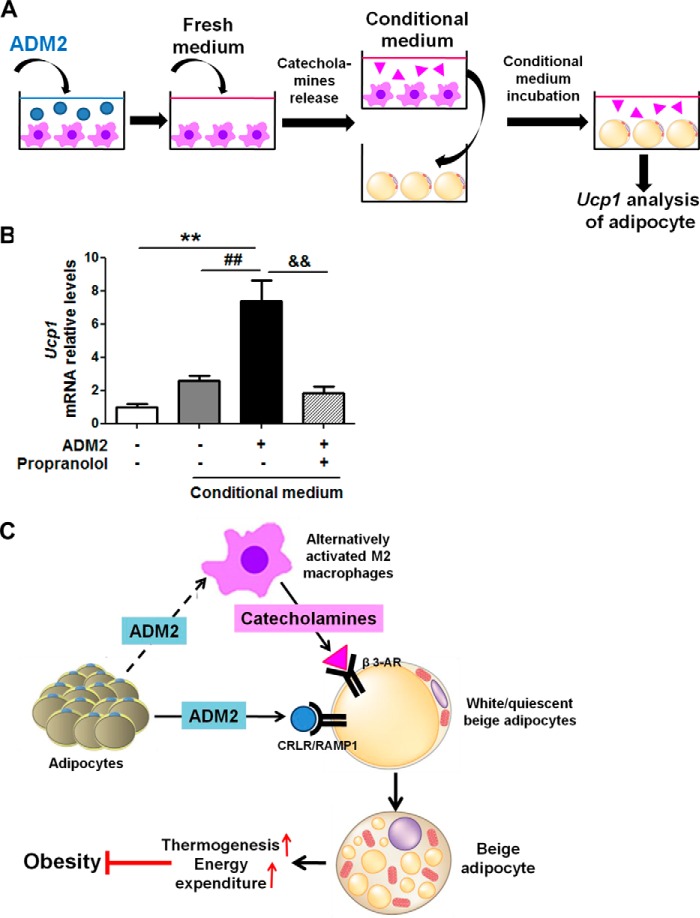FIGURE 8.
ADM2 promotes beiging in scWAT through cross-talk between adipocytes and macrophages. A and B, conditioned medium test. A, the conditional medium system for adipocytes and macrophages. After treatment with 20 nm ADM2 for 12 h, fresh medium was given to macrophages for catecholamine accumulation. Then the conditioned medium of macrophages was collected and given to adipocytes. After incubation with the medium for 8 h, adipocytes were collected for Ucp1 mRNA analysis. B, relative mRNA levels of Ucp1 in adipocytes treated with conditioned medium from ADM2-treated or control macrophages for 8 h with or without 1-h pretreatment of the β-adrenergic receptor antagonist propranolol (10 μm), and adipocytes treated with normal control medium were used as a negative control. β-Actin was used as a normalization gene. Data are represented as mean ± S.E. n = 3 independent experiments (3–6 samples/experiment). One-way ANOVA with Newman-Keuls test: **, p < 0.01 versus normal control medium; ##, p < 0.01 versus control conditioned medium; &&, p < 0.01 versus ADM2-treated conditioned medium. C, proposed model of the effects of ADM2 on WAT beiging and energy homeostasis. As an endogenous beiging activator, ADM2 interacts with the CRLR-RAMP1 receptor on adipocytes and activates beiging of white adipocytes directly. Additionally, ADM2 acts on resident macrophages in scWAT and promotes M2 polarization and catecholamine production. The catecholamine secreted locally by M2 macrophages in turn activates the β3 adrenergic receptor on adipocytes and enhances white adipocyte beiging. The induced beige adipocytes utilize UCP1 to uncouple oxidative respiration and dissipate excess energy by thermogenesis, thus improving systematic energy homeostasis and attenuating HFD-induced obesity and related metabolic disorders.

